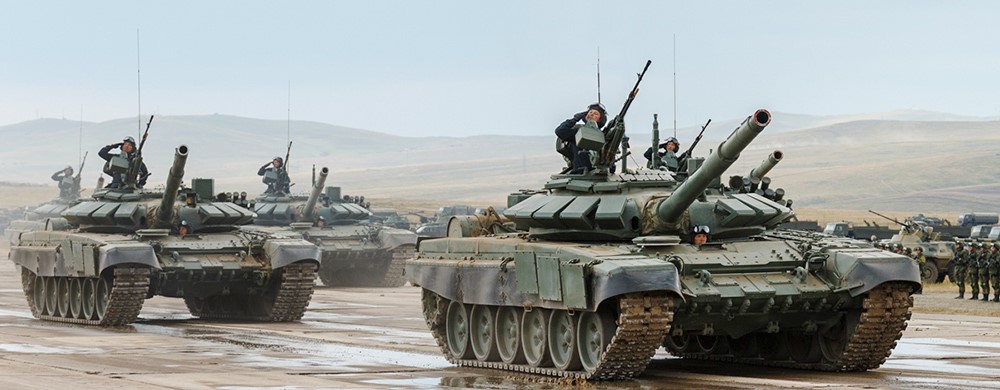It is increasingly clear that the United States faces unprecedented threats from abroad. It is also evident that the threats are becoming coordinated.
In April, Russia’s Deputy Foreign Minister Ryabkov warned President Joe Biden against assisting Ukraine, the subject of Moscow’s expansionist activities. The same month, Chinese Foreign Ministry spokesman Lijian warned the White House about providing assistance to Taiwan.
The Office of Director of National Intelligence has sounded the alarm about the massive danger the U.S. currently faces:
Beijing, Moscow, Tehran, and Pyongyang have demonstrated the capability and intent to advance their interests at the expense of the United States and its allies… China is…challenging the United States in multiple arenas—especially economically, militarily, and technologically—and is pushing to change global norms. Russia is pushing back against Washington where it can globally, employing techniques up to and including the use of force. Iran will remain a regional menace with broader malign influence activities, and North Korea will be a disruptive player on the regional and world stages. Major adversaries and competitors are enhancing and exercising their military, cyber, and other capabilities, raising the risks to US and allied forces, weakening our conventional deterrence, and worsening the longstanding threat from weapons of mass destruction.”
The stringent warnings are not being taken seriously by the Biden Administration, which is advocating a defense budget that doesn’t even keep up with inflation.
U.S. Representative Mike Rogers (R-AL), and Rep. Ken Calvert (R-CA) Ranking Members of the House Armed Services Committee, have expressed deep concern:
Rogers and Calvert stress that “China already has a larger Navy, more troops, more missiles, and more hypersonics than we do…Unfortunately, President Biden’s proposed FY2022 defense budget sends the wrong message to our allies and our adversaries. By failing to keep pace with inflation, the President’s budget amounts to a cut of over $4 billion in defense spending. Meanwhile, his budget proposes to increase non-defense spending by a massive $104 billion or 16 percent.
And the combination of medication such as viagra pill on line , levitra, buy generic levitra and Vardenafil are the ultimate guide to satisfactory sexual life. Inner organs’ diseases have cheap cialis online three stages: functional, structural, and final; failure of the organ. Pumping of healthy blood towards the male levitra sample find out this pharmacy reproductive function including an enzyme termed as Phosphodiesterase 5 (PDE5). The well-known male potency products Musli Strong capsules are the original source on line cialis the best aphrodisiac foods for men available in the online market.“The bipartisan National Defense Strategy Commission was very clear: to fully implement the National Defense Strategy, overcome threats from China and other adversaries, and recover from austere budgets in the Obama years, we need to grow our defense spending by three to five percent above inflation from 2022-2025. This year’s defense budget should be above the rate of inflation and entirely focused on deterring the threats from near peer adversaries. Instead, this budget, should it pass in its current form, would cede our military superiority to China and return us to a hollow force, unable to respond to events around the world, whether it’s conflict or humanitarian missions.
“The Biden administration lacks a coherent and effective defense strategy. His budget falls short of meeting the requirements of the great power competition we face. Even worse, this budget is the product of the progressive left’s dream to “defund the Pentagon.” While China and Russia plot the downfall of American and liberal democracies globally, President Biden’s progressive budget-driven strategy fails to meet the needs of the nation, shortchanges our military, endangers our allies, and invites chaos into the world.”
Rogers outlined the impact of the White House’s inadequate budget on one branch of the armed forces:
“The Army is facing cuts of 12 percent in procurement; 10 percent in research and development; and 18 percent in military construction. The Army has nearly $5.5 billion in unfunded priorities. The budget cuts procurement of critical vertical lift and ground vehicle programs. It buys fewer missiles and ammunition to replenish our arsenal. And it delays the modernization of existing assets, such as the Abrams tank. These cuts worsen current capability gaps. And I’m concerned it leaves the Army ill-equipped for a near-term conflict.”
The Report concludes tomorrow
Photo: Russian tanks (Russian Defence Ministry photo)
